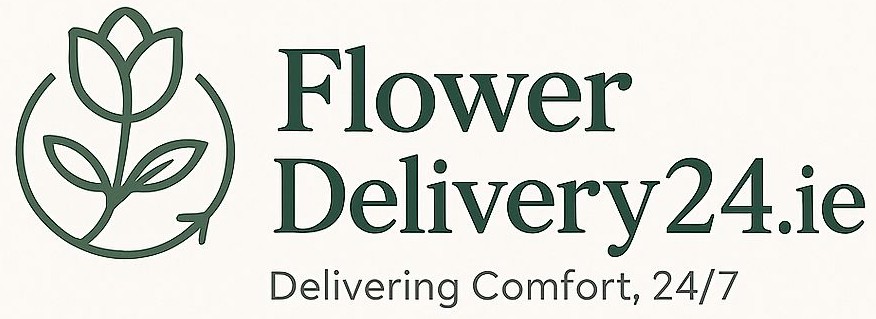When the desire to send a heartfelt bouquet strikes, the magic of flower delivery often comes to mind. Yet, for many, the term “frosses” in the context of flowers might evoke a sense of confusion or even concern. This post aims to demystify this crucial element of floral care, exploring what frosses are, why they matter, and how understanding them can elevate your flower delivery experience from simply receiving blooms to nurturing long-lasting beauty. We’ll delve into the intricacies of preserving freshness, ensuring your chosen arrangements arrive vibrant and stay that way, transforming potential wilting woes into enduring floral artistry.
Understanding “Frosses”: More Than Just Frost
The term “frosses” in floristry refers to the detrimental effects of cold temperatures on cut flowers, particularly during transportation and handling. It’s not simply about frostbite as we might understand it for plants in the ground, but a broader concept encompassing chilling injury. This injury can manifest in various ways, from browning petal edges and limp stems to a complete loss of turgor and wilting. Recognizing these signs is the first step in preventing them and ensuring the longevity of your delivered flowers.
Unlike hardy outdoor plants, cut flowers are delicate and possess specific temperature tolerances. Exposure to temperatures below their optimal range, even for short periods, can disrupt their cellular structure and vital functions. This damage is often irreversible, meaning a flower that has suffered from frosses may never fully recover its pristine appearance and vase life. Therefore, understanding how to protect flowers from these cold stresses is paramount for both senders and recipients of floral gifts.
The impact of frosses can be subtle at first, but it significantly compromises the overall aesthetic and lifespan of the bouquet. A flower that looks slightly off-color or droopy due to chilling might be perceived as of lower quality, regardless of its initial beauty. This is why reputable florists implement stringent measures to mitigate cold-related damage throughout their supply chain, from sourcing to the final delivery to your doorstep.
The Journey of a Flower: Vulnerabilities in Transit
The path from a grower’s field to a recipient’s vase is a complex one, often involving significant travel and varying environmental conditions. During this journey, flowers are exposed to numerous potential stressors, and temperature fluctuations are among the most significant. From refrigerated trucks and air cargo holds to the final leg of local delivery, maintaining an optimal temperature is a constant challenge.
Consider the logistics involved: flowers might be harvested at dawn, packed into climate-controlled boxes, and then transported to distribution centers. From there, they could embark on cross-country or even international journeys before reaching their local florist. Each of these stages presents an opportunity for chilling injury if proper protocols aren’t meticulously followed. The seamless beauty we admire in a delivered bouquet is a testament to the careful management of these vulnerabilities.
Even a brief exposure to unsuitably cold air during loading or unloading can initiate the frosses process. This is why many flower delivery services invest heavily in specialized packaging and temperature-controlled vehicles. They understand that protecting their precious cargo from extreme temperatures is as vital as ensuring it arrives on time and in perfect condition. The success of a beautiful floral arrangement hinges on this careful choreography of preservation.
Identifying the Signs of Frosses in Your Blooms
As a recipient, knowing how to spot the tell-tale signs of frosses can help you assess the quality of your delivered flowers and take immediate action. One of the most common indicators is a dullness or lack of vibrancy in the petals, often accompanied by a slightly translucent appearance. This is the flower’s tissues responding to cold damage, losing their natural plumpness and elasticity.
Another significant sign is wilting, but not the typical kind that comes from a lack of water. Frosses-induced wilting often affects the entire stem and flower head uniformly, appearing as if the blooms have lost all their structural integrity. Petals might feel soft and pliable, rather than crisp and firm, and browning or blackening of petal edges is also a frequent consequence of extreme cold exposure.
In more severe cases, you might notice a distinct lack of fragrance, as the cold can damage the scent-producing cells within the flower. The overall texture of the leaves and petals can feel brittle or mushy, a clear indication that their cellular integrity has been compromised. By being aware of these symptoms, you can better understand if your flowers have been subjected to detrimental cold temperatures during their journey.
The Role of Packaging and Insulation in Preventing Frosses
The way flowers are packaged plays a critical role in shielding them from temperature fluctuations and preventing frosses. High-quality flower delivery services utilize specialized packaging materials designed for insulation. These often include layers of sturdy cardboard, protective sleeves, and sometimes even bubble wrap or foam inserts to create a microclimate that buffers against external temperature changes.
Think of it like a thermal blanket for your blooms. These materials work to slow down the rate of heat transfer, keeping the flowers at a more stable temperature inside the box. This is especially important during cooler months when the risk of exposure to cold air is significantly higher. Proper packaging ensures that the temperature inside the box remains consistent, preventing sudden drops that can shock and damage delicate petals.
Furthermore, the sealing of the packaging is crucial. Airtight seals help to maintain the internal temperature and prevent the ingress of cold air. Some florists may even include a small ice pack or heat pack, depending on the climate and the specific flower types, to further regulate the internal environment. This attention to detail in packaging is a direct investment in the freshness and longevity of the delivered flowers.
Temperature Control: The Unseen Hero of Flower Delivery
Beyond packaging, active temperature control throughout the delivery chain is the cornerstone of preventing frosses. Reputable flower delivery companies invest in refrigerated vehicles and climate-controlled warehousing to ensure that flowers are never exposed to extreme temperatures, whether hot or cold. This consistent control is vital from the moment flowers are collected from the grower to their final destination.
During transit, especially for long-distance deliveries, the temperature inside delivery vans and trucks is meticulously monitored. These vehicles are equipped with advanced climate control systems that can maintain a precise temperature range, typically between 4-7 degrees Celsius for most cut flowers. This steady environment significantly reduces the risk of chilling injury and ensures that blooms arrive at their peak freshness.
This dedication to temperature management extends even to the final mile of delivery. While it may not always be apparent to the recipient, florists work diligently to minimize the time flowers spend exposed to ambient temperatures. This includes coordinating delivery routes and schedules to ensure promptness, especially during adverse weather conditions. The unseen infrastructure and operational protocols are what truly safeguard your floral gifts.
Seasonal Considerations: When Frosses Becomes a Bigger Threat
The threat of frosses is inherently linked to the season, with winter months posing the most significant challenges for flower delivery. As temperatures plummet, the risk of flowers being exposed to freezing conditions during transit or even while waiting on a doorstep increases dramatically. This seasonality demands extra vigilance from both florists and consumers.
During colder periods, flower delivery services often implement enhanced protective measures. This might include using thicker insulation in packaging, opting for warmer delivery routes, or even temporarily suspending deliveries to extremely remote or exposed locations. The goal is always to minimize any potential for cold damage, ensuring the integrity of the floral arrangement.
As a recipient, being aware of seasonal risks is also beneficial. If you are ordering flowers during a particularly cold spell, it is wise to inform the recipient to be present for the delivery or to have a safe, sheltered spot ready for the bouquet to avoid prolonged exposure to the elements. Proactive communication can be a powerful ally in preventing frosses during critical times of the year.
What to Do If Your Flowers Show Signs of Frosses
If you receive a bouquet and suspect it has suffered from frosses, acting promptly can sometimes help mitigate the damage, though complete recovery is not always possible. The first step is to immediately place the flowers in fresh, cool water. Ensure the water is at room temperature, as very cold water can further shock the delicate tissues.
Trim the stems at an angle with a sharp knife or shears under running water. This helps to open up the vascular system and allows for better water uptake. Remove any leaves that would fall below the waterline, as these can rot and contaminate the water, further stressing the flowers. Gently misting the petals with cool water can also help to rehydrate them.
It is also advisable to contact the flower delivery service or florist. Reputable companies pride themselves on the quality of their products and will likely offer a resolution, such as a replacement bouquet or a refund, if their quality standards have not been met. Providing clear details and, if possible, photographic evidence of the damage can expedite the process and help them improve their practices.
Choosing a Reputable Flower Delivery Service: Your First Line of Defense
The most effective way to avoid the disappointment of frosses is to choose a flower delivery service that prioritizes quality and has established robust procedures for handling and transporting delicate blooms. Look for companies that clearly outline their shipping practices, especially regarding temperature control and packaging.
Customer reviews can be an invaluable resource in gauging a florist’s reliability and the quality of their delivered products. Pay attention to feedback related to the freshness and longevity of the flowers, as well as any comments about how the arrangements held up during transit. A consistent pattern of positive reviews regarding the condition of delivered blooms is a strong indicator of a trustworthy service.
Consider asking about their delivery guarantees and their policies regarding damaged or wilted flowers. A company confident in its ability to deliver pristine arrangements will typically offer assurances and a straightforward process for addressing any issues that may arise. By investing a little time in research, you can significantly increase your chances of enjoying beautiful, long-lasting flowers.
The Art of Flower Preservation: Beyond the Delivery Box
While the delivery service plays a crucial role in preventing initial frosses, the recipient’s care thereafter significantly influences the flowers’ longevity. Once you’ve received your beautiful bouquet, understanding basic flower care practices will further enhance their vase life and keep them looking vibrant for as long as possible.
Regularly changing the water in your vase is essential. Stagnant water can harbor bacteria, which can clog the flower stems and prevent them from absorbing water. Aim to change the water every two to three days, rinsing the vase thoroughly each time. Also, re-trimming the stems at an angle every few days can help them continue to take up water effectively.
Keep your flowers away from direct sunlight, heat sources, and ripening fruit. These factors can accelerate the aging process and cause wilting. A cool, indirect light environment is ideal for most cut flowers. By following these simple yet effective tips, you can extend the beauty of your flowers, ensuring you can enjoy them for days to come, a testament to both excellent delivery and thoughtful home care.
Conclusion: Embracing the Full Potential of Your Floral Gifts
Understanding the concept of “frosses” and the measures taken to prevent it allows us to appreciate the intricate process behind flower delivery. From specialized packaging and climate-controlled transportation to the careful selection of reputable florists, every step is designed to bring you the freshest, most beautiful blooms possible.
By being informed as a consumer and practicing diligent care upon receipt, you can ensure that your floral gifts not only arrive in perfect condition but also bring lasting joy. The journey of a flower is a testament to dedication and expertise, and recognizing the efforts involved empowers you to fully embrace the beauty and sentiment of every delivered bouquet.
Ultimately, whether you are sending flowers to express your love, sympathy, or celebration, a little knowledge about the unseen challenges and solutions in flower delivery can transform a simple transaction into an experience of enduring floral delight. May your future deliveries be consistently vibrant and your blooms flourish.
“`































